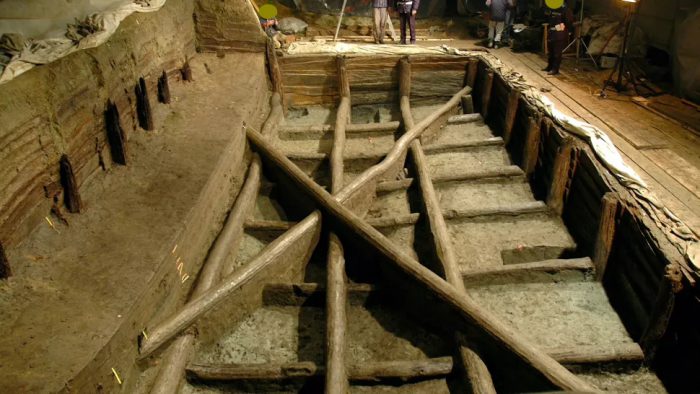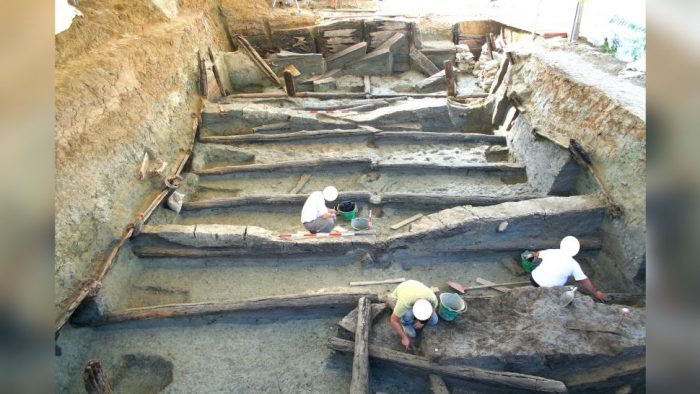These days, there are few signs of modern luxury quite like the infinity pool.
It would be fun to take a dip in that right now! (Getty Embed)
It's a swimming pool without raised edges, so that it sort of feels like the pool has no real end and just flows off forever, or into infinity. But according to a discovery near the Parma region of northern Italy, these pools aren't necessarily a recent invention.
That's because back in 2004, archeologists excavated an intriguing human-made pit on a hilltop. It dated back to the Bronze Age, somewhere between 1600 and 1300 BCE (around 3500 years ago). It was lined with wooden beams and measured about 12 metres (40 feet) long, by 7 m (23 ft) wide and 3 m (10 ft) deep. Layers of sediment—or dirt carried by water—suggests that it was once filled with water.
And after many years of study, researchers believe that it was an infinity pool!
No, this wasn't a vacation resort

The pool was likely built by an ancient people now known as the Terremare. (Getty Embed)
Though this might have been fun to swim in (and for all we know, people did!), researchers don't think that this is why this particular pool existed. Instead, they believe that it was built for rituals and ceremonies. It would've been like a mirror for the sky.
In an interview with Live Science, Sturt Manning, an archeologist from Cornell University said, "as you got close to it, then you would have just been looking at the [reflected] sky — so you'd have, in a sense, entered another world."
Manning was part of a team that wrote a new paper on the site. They are calling it "Vasca Votiva", which means 'sacred pool' in Italian. The pool's position on a hilltop would've added to its beauty—this high spot allowing it to reflect a wider area of the countryside and sky.
How do they know it was for rituals?
By this time in history, humans had experience building pools and ditches for irrigation (watering crops). So why do researchers think that this was made for ceremonies? Because it had no drainage, or channels for water to leave it.
Irrigation reservoirs were designed to allow water to flow out to specific areas where it would be needed. That—along with the 'elaborate' nature of the its design—makes researchers believe that this site had religious significance.
Of course, it is still just a guess. But it's not hard to imagine an ancient culture gathering around the pool on a clear night, and gazing into it as they thought about the meaning of life. Lots of us already like to do that when we sit by water!
 This is the pit that archeologists believe was used as a ceremonial pool over 3,000 years ago. (Cremashi et al, PLOS One)
This is the pit that archeologists believe was used as a ceremonial pool over 3,000 years ago. (Cremashi et al, PLOS One)









